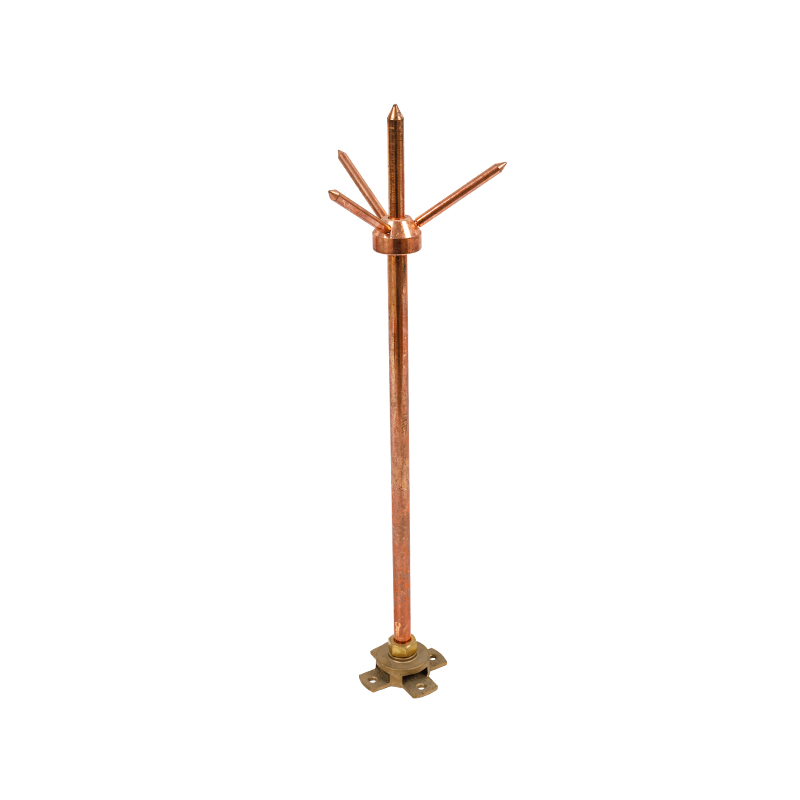Industrial facilities are complex environments that house valuable equipment, machinery, and materials. These facilities are often large, with extensive electrical systems and infrastructure, making them highly susceptible to the damaging effects of lightning strikes. To safeguard these critical assets and ensure uninterrupted operations, lightning protection systems tailored for industrial settings are essential.
1. Protecting Expensive Machinery:
Industrial facilities typically house expensive and specialized machinery that is vital for production processes. A lightning strike to this equipment can result in significant downtime, repairs, and financial losses.
Lightning rods and protection systems help mitigate the risks by providing a safe path for lightning to follow, diverting the electrical discharge away from the machinery and preventing damage.
2. Safeguarding Electrical Systems:
The electrical infrastructure in industrial facilities is extensive, including switchgear, control panels, and electrical distribution systems. Lightning-induced voltage surges can cause equipment failure and disrupt power distribution. Lightning protection systems, including surge protection devices, help maintain stable electrical systems by redirecting excess electrical energy to the ground, protecting sensitive electronics and preventing power disruptions.
3. Preventing Fires and Explosions:
Lightning strikes have the potential to cause fires and explosions in industrial environments, especially in facilities where flammable materials are present. Lightning rods and protection systems mitigate this risk by providing a low-resistance pathway for the lightning current, ensuring it does not ignite any flammable substances and preventing catastrophic accidents.
4. Ensuring Personnel Safety:
The safety of personnel working in industrial facilities is of utmost importance. Lightning protection systems help minimize the risk of lightning-related accidents, ensuring that workers can carry out their tasks with confidence during thunderstorms. By effectively dissipating the electrical discharge, these systems create a safer working environment for employees.
5. Reducing Downtime and Production Losses:
Industrial facilities rely on continuous operations to meet production demands. Lightning strikes can disrupt operations, leading to costly downtime and production losses. By installing lightning rods and protection systems, facilities can reduce the risk of lightning-induced disruptions, enhancing overall productivity and profitability.
6. Offshore and Remote Facilities:
Industrial facilities located in offshore environments or remote areas are particularly vulnerable to lightning strikes due to their exposure to harsh weather conditions. Lightning rods and protection systems are crucial in these settings to provide an additional layer of defense against lightning risks.
7. Customized Solutions:
Each industrial facility has unique characteristics, layout, and electrical systems. As such, lightning protection solutions are often tailored to suit the specific needs of the facility. Lightning protection specialists conduct site assessments, taking into account factors such as the facility's size, structure, equipment layout, and geographical location to design an effective and efficient lightning protection system.
8. Compliance with Safety Standards:
Industrial facilities are subject to safety regulations and standards that address lightning protection requirements. Adhering to these standards ensures that facilities meet the necessary safety criteria and reduces liability in the event of lightning-related incidents.
9. Regular Maintenance and Inspections:
To ensure the continued effectiveness of lightning protection systems, regular maintenance and inspections are essential. Periodic checks and testing of the lightning rods, grounding systems, and surge protection devices help identify any potential issues and ensure the system's optimal performance.
 Needle Type Lightning Rod
Needle Type Lightning RodLightning Rods Provide The Strike Point In A Lightning Protection System. They Can Be Used With Or Without Multiple Points With Or Without Elevation Rods. However, Research Indicates Multiple Points With Taper Rod Offer More Effectivity.

